Consult with our experts to pick your prefect rug delivered to your door step.
Or start with the one closest to your desire from our catalogue, we will provide you with all the possible options
Showing 1–9 of 507 resultsSorted by popularity
Or start with the one closest to your desire from our catalogue, we will provide you with all the possible options
Abadeh rugs originate from the city of Abadeh in central Iran, situated roughly halfway between Isfahan and Shiraz. Weaving in Abadeh dates back to the 19th century, but the rugs gained distinct recognition in the early 20th century as local weavers blended influences from the nomadic Qashqai tribe and the elegant styles of Isfahan. This fusion of tribal and city craftsmanship created the unique Abadeh aesthetic. The region’s cultural crossroads meant that Abadeh rugs inherited rich design traditions from traveling nomads who passed through the area. Each Abadeh carpet carries a story of Fars Province’s heritage – a testament to how a small town became a notable hub for Persian rug weaving.
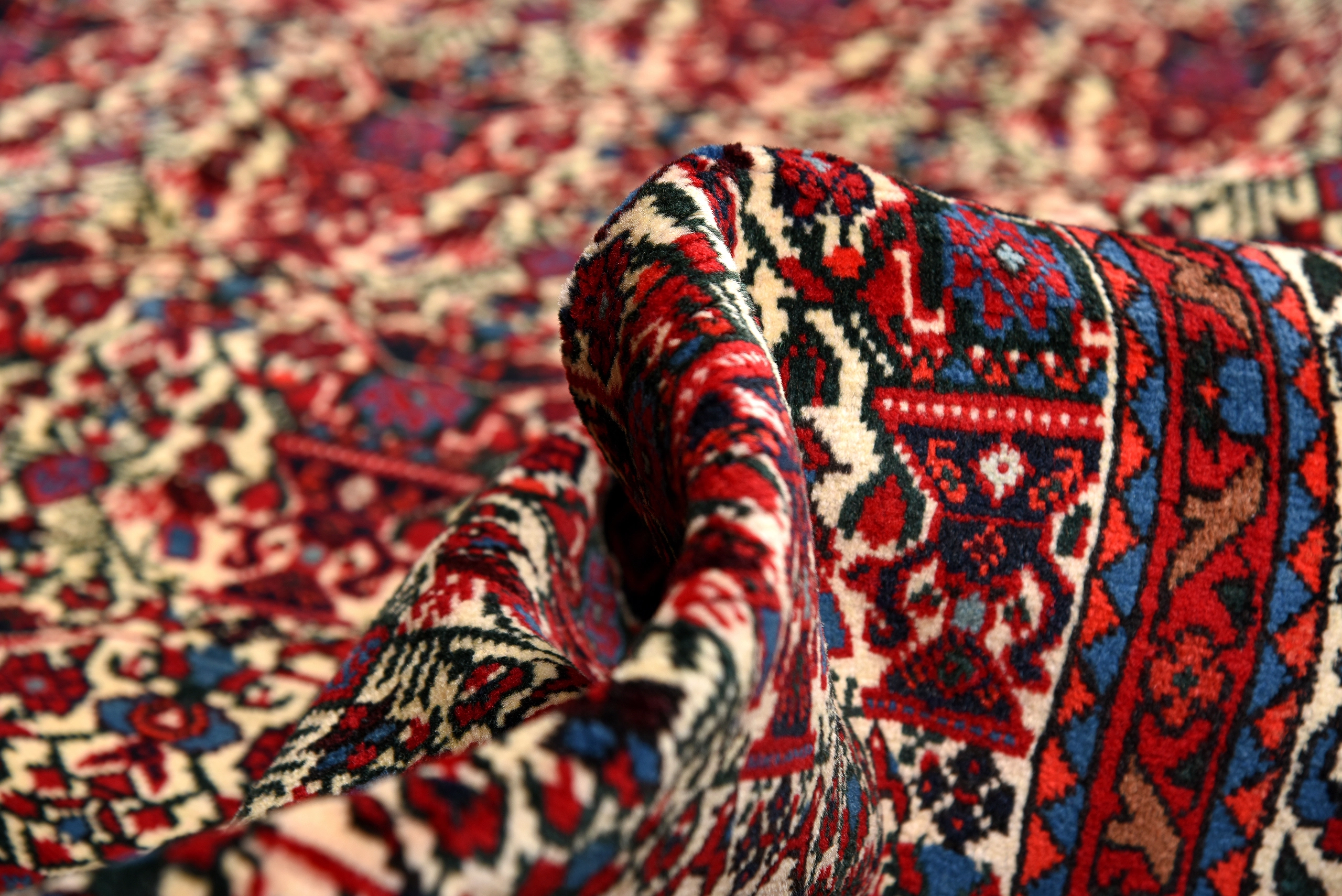
Abadeh Persian rugs are instantly recognizable by their striking hexagonal medallion (often called a Zil-e-Sultan medallion) centered on the field. This medallion style is thought to be inspired by Isfahan rugs, yet the surrounding field is filled with tribal-flavored motifs drawn from Qashqai influence.
You’ll typically find geometric motifs and charming natural symbols – small birds, four-legged animals, flowers, and shrubs – arranged symmetrically around the medallion. Abadeh borders usually feature multiple narrow bands with repeating floral or vine patterns, again reflecting a mix of Persian garden imagery and tribal geometry.
The color palette is rich and warm: predominantly deep brick reds and indigo blues with accents of ivory, beige, and occasional green. This gives Abadeh carpets a vibrant yet dignified look. In essence, an Abadeh rug combines the order of city designs with the whimsy of nomadic art – a floral-geometric harmony unique to its provenance.
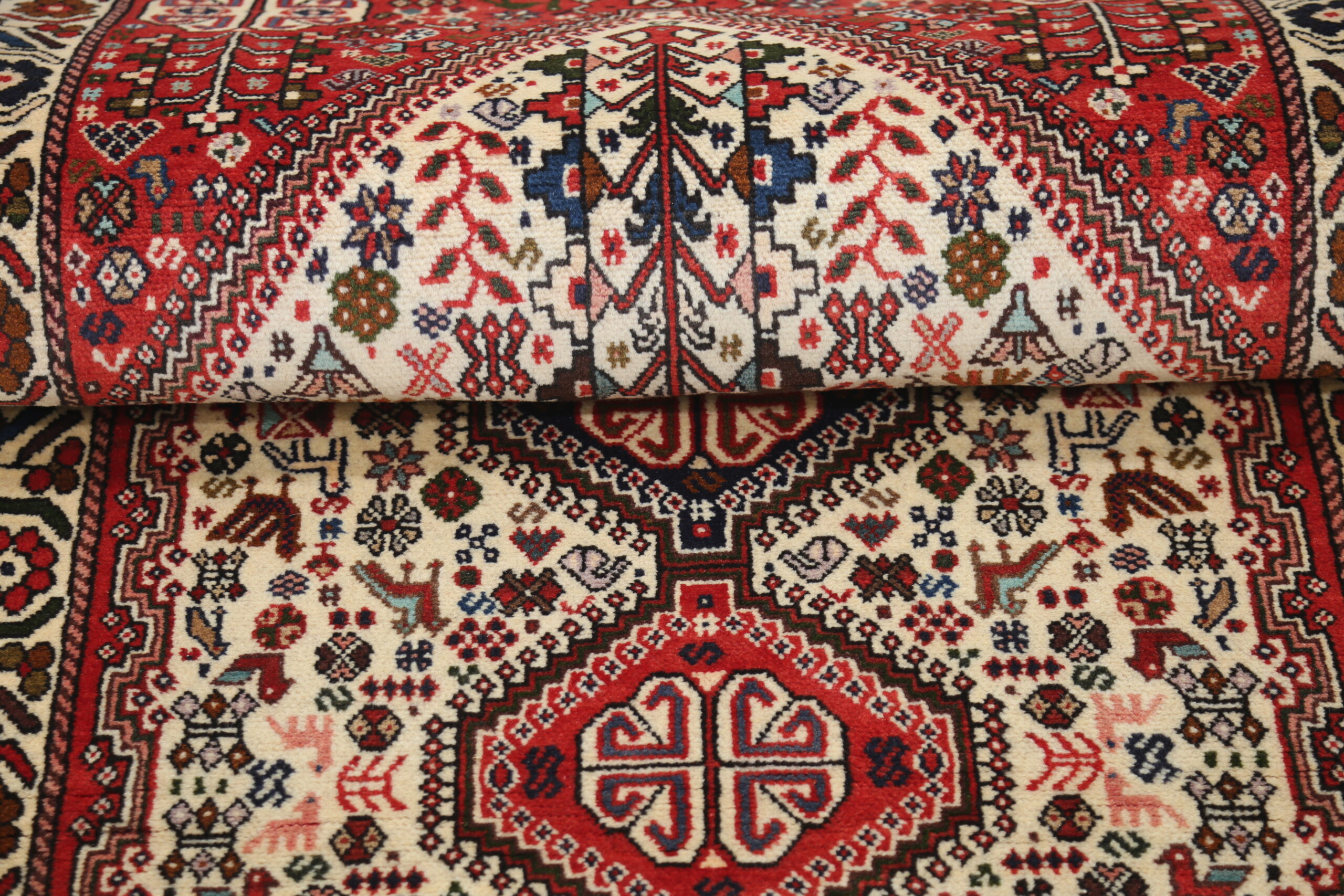
Abadeh rugs are woven with quality materials that ensure both beauty and durability. The pile is made of tightly spun local sheep’s wool, which is resilient yet soft to the touch. For the foundation, weavers use cotton warps and wefts, providing a strong structure that helps the rug lie flat and endure foot traffic.
Traditional vegetable dyes derived from plants and insects create the rich colors – for example, madder root yields the hallmark red, and indigo yields the deep blue. Abadeh weavers employ the Persian knot (asymmetrical Senneh knot) technique, often achieving knot densities around 150,000 to 300,000 knots per square meter.
While not as fine as the highest-tier city rugs, this knot count allows for a good level of detail. The weave is moderately fine and very consistent. The combination of fine wool and Persian knotting gives Abadeh rugs a smooth feel and crisp pattern definition. Weavers meticulously shear the pile to a medium height, which enhances clarity of the motifs. Overall, the craftsmanship in Abadeh carpets reflects a dedication to quality – a blend of tribal hand-knotting heritage with an eye for refined detail.
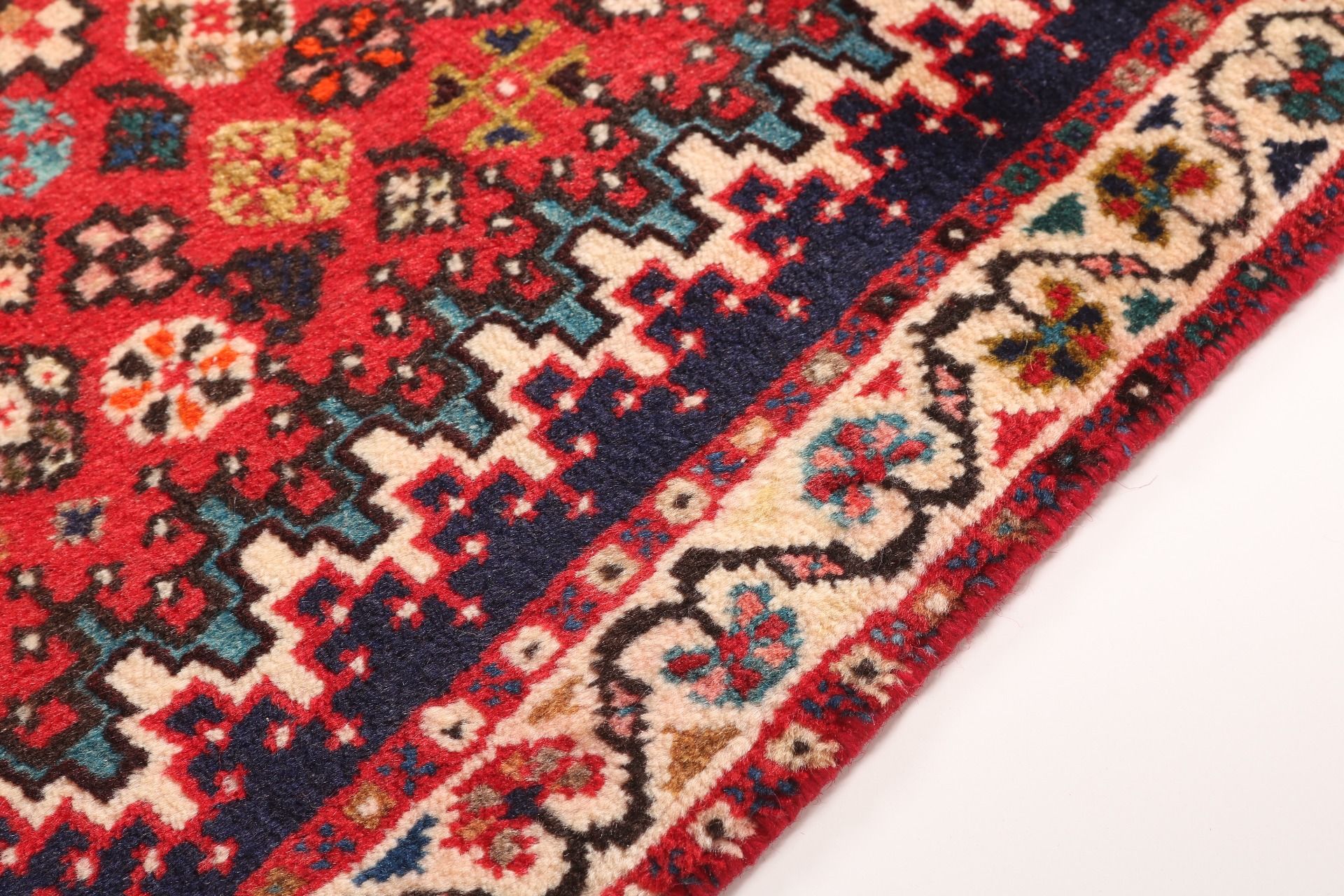
Thanks to their robust construction, Abadeh rugs are ideal for everyday use in a variety of home settings. The sturdy wool pile and hearty cotton foundation mean these rugs can handle high foot traffic gracefully. An Abadeh rug’s typical size (often medium room sizes or runners) and durable weave make it perfect for hallways and entryways – you can confidently use an Abadeh runner in an entrance without fear of quick wear.
In living rooms or dining rooms, the warm reds and blues of an Abadeh carpet add a welcoming ambiance, pairing well with wooden floors and traditional furniture. These rugs strike a balance between decorative and durable, so they work nicely in family rooms or offices where you want both style and sturdiness. The tribal touches also lend a cozy, inviting feel – imagine an Abadeh rug anchoring a seating area, its vibrant medallion drawing the eye. Because the design is a mix of formal (medallion) and informal (tribal motifs), an Abadeh rug is versatile: it complements classic interiors and can even be a focal point in eclectic or bohemian décor. Wherever you place it, this rug will bring a bit of Persian cultural flair while comfortably handling the demands of the room.

One of the advantages of Abadeh rugs is their excellent value for money. They are generally more affordable than the ultra-fine silk city carpets, yet they offer authentic Persian craftsmanship and longevity. Typical prices for a mid-sized Abadeh rug can range from a few hundred to a couple thousand USD, depending on age, knot density, and condition. Newer Abadeh rugs woven today continue the tradition and are often budget-friendly for first-time buyers.
Despite the moderate price point, these rugs do not skimp on quality – the wool is hardy and the dyes colorfast. An investment in an Abadeh means you’re getting a rug that can easily last for decades with proper care. In fact, many consider an Abadeh carpet an ideal “starter” Persian rug or an entry-level collectible. Vintage Abadeh pieces from mid-20th century can carry higher values if they are in great shape, as collectors appreciate their authentic dyes and handspun wool.
In terms of durability, an Abadeh’s tight weave and strong materials make it resistant to wear, so it maintains its appearance and value over time. In summary, purchasing an Abadeh rug is a savvy investment: you acquire an aesthetically beautiful Persian rug without an exorbitant cost, and you gain a durable floor covering that holds up in value and utility.
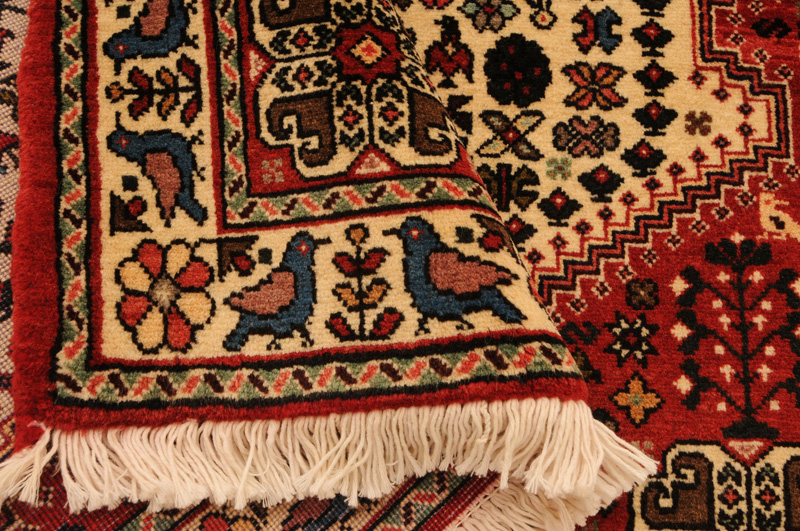
Buying an Abadeh rug is an opportunity to own a piece of Persian heritage that combines beauty, durability, and affordability. For shoppers comparing Persian carpets, an Abadeh stands out as a rug that offers rich cultural artistry – the hexagon medallion and tribal motifs immediately convey an authentic Persian charm – while being sturdy enough for daily life.
If you’re looking to shop Abadeh Persian carpets online, you’ll notice they consistently receive praise for their robust build. These rugs are often recommended for first-time rug buyers or those furnishing a home on a budget, because you get a high-quality hand-knotted rug without breaking the bank. Moreover, an Abadeh rug’s versatile design means it can easily blend with various interior styles, making it a practical choice when you want to buy a Persian rug that you can move from room to room or home to home.
Each rug carries the story of Abadeh’s unique blend of influences, so owning one is like owning a cultural tapestry – a conversation piece on your floor. In a sales sense, Abadeh rugs practically sell themselves to informed buyers: they are durable, value-priced, and aesthetically striking. Whether you are a rug enthusiast expanding your collection or a homeowner seeking that perfect living room centerpiece, an Abadeh rug is a smart and satisfying purchase that you will enjoy for many years.
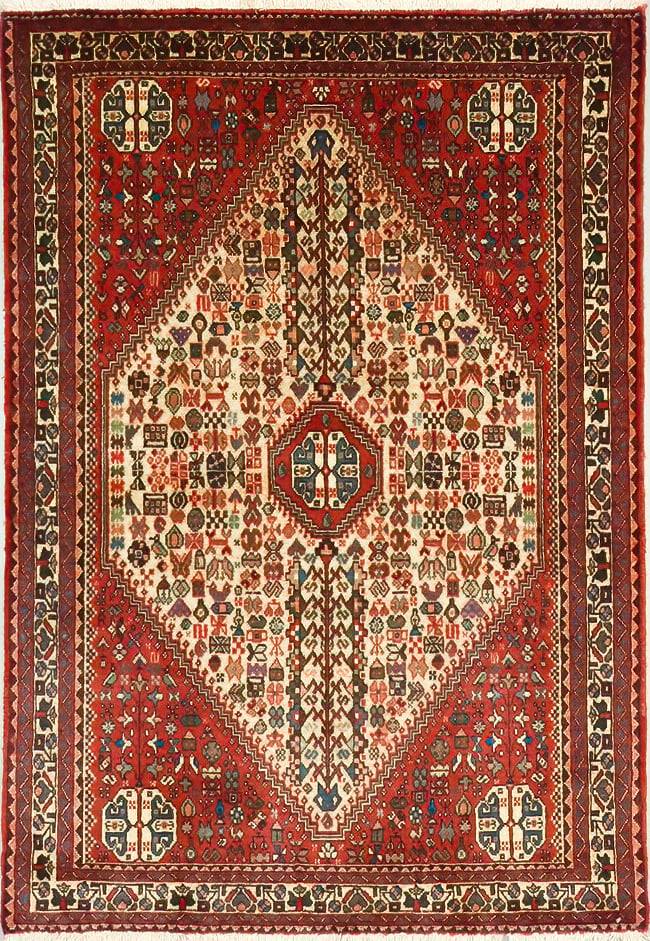
To ensure your Abadeh rug remains vibrant and sturdy for generations, follow these care best practices:
Regular Vacuuming: Vacuum your rug weekly on a low-power setting. This removes dust and grit from the wool pile. Avoid using a harsh beater bar on the rug to protect the fibers and the fringe.
Rotate Periodically: Every 6–12 months, rotate your Abadeh rug 180 degrees. Rotation ensures even wear, especially if the rug is in a high-traffic area or gets sunlight on one side. This prevents uneven fading of those rich red and blue dyes.
Avoid Excess Sunlight: Place the rug away from direct sunlight where possible. Natural dyes can fade over time under harsh UV rays. If your rug is in a sunny spot, using blinds or curtains during peak sun hours will help preserve its colors.
Spot Clean Spills: If a spill occurs, act quickly. Blot (don’t rub) with a clean cloth to absorb moisture. Use a mild soap and water solution to gently dab the area if needed. For tough stains (wine, pet accidents), consider a professional rug cleaner to avoid color bleeding.
Use a Rug Pad: Underlay your Abadeh carpet with a quality rug pad. A pad will prevent sliding, add cushioning, and reduce wear on the knots by absorbing impact. It also promotes air circulation under the rug, which is good for the floor and rug health.
Professional Cleaning: Every few years, have the rug professionally hand-washed by experts. Abadeh rugs are made of wool and cotton, which respond well to traditional cleaning methods. A professional cleaning will rejuvenate the wool’s natural oils and bring back the rug’s sheen without damaging it.
Following these tips will keep your Abadeh rug looking as glorious as the day you bought it. With minimal care, this rug will maintain its vibrant colors and strong pile for decades.

An Abadeh rug’s blend of elegance and ruggedness means it can adorn many types of interiors. Here are a few settings where an Abadeh truly shines:
Traditional Foyer or Hallway: Lay an Abadeh runner in your entrance hall. The rug’s robust wool and busy pattern hide dirt well, making it perfect for welcoming guests with a dash of Persian style in a high-traffic area.
Classic Living Room: Center an Abadeh rug under a coffee table or in front of a sofa. Its rich red tones and central medallion become a focal point, complementing wood furniture, leather sofas, or antique pieces beautifully. The rug’s character brings warmth and a story to a classic decor.
Eclectic or Bohemian Space: The mix of tribal and floral elements in Abadeh carpets works wonderfully in eclectic settings. Drape one across a hardwood floor in a boho-styled study or artist’s loft – the vibrant colors and folkloric motifs will tie together diverse furniture and artwork into a cohesive, inviting space.
Dining Room with Dark Furniture: Place an Abadeh under a dining table (ensure you choose a size with enough coverage beyond the chairs). The deep indigo and madder hues pair well with dark woods or mahogany. Plus, the hardy weave means it can handle the movement of chairs. It transforms a dining area into an exotic, cozy gathering spot.
Home Office or Library: Under a desk or between bookshelves, an Abadeh adds a touch of sophistication without being too formal. Its durable construction stands up to chair rollers (with a pad underneath) and foot traffic, while the intricate design can inspire and energize your work or study environment.
In any of these settings, an Abadeh Persian rug doesn’t just decorate the room – it elevates it. With its storied motifs and hardy craftsmanship, this rug effortlessly merges utility with artistry, making your space feel both lived-in and luxurious.
As a family-owned Persian carpet shop, we bridge the gap between passionate collectors and skilled weavers, supporting both the artistry and the heritage of this timeless craft.
We guarantee fair prices for Original Authentic Persian Carpets
Address:
Shop No-GD 04, Dragon Mart 2 –
Dubai – United Arab Emirates
No.36 – 10th st. – Hafez Ave. –
Shiraz , Iran
Block 19 – Kooye Mohandesan –
Kish Island, Iran
Email info@letsgopersian.com
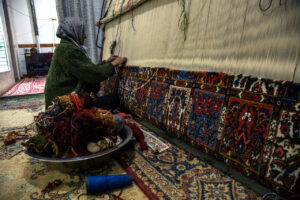
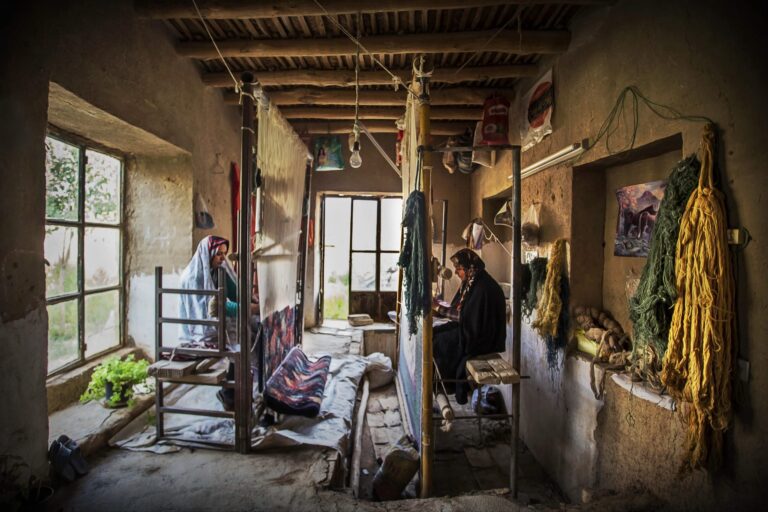
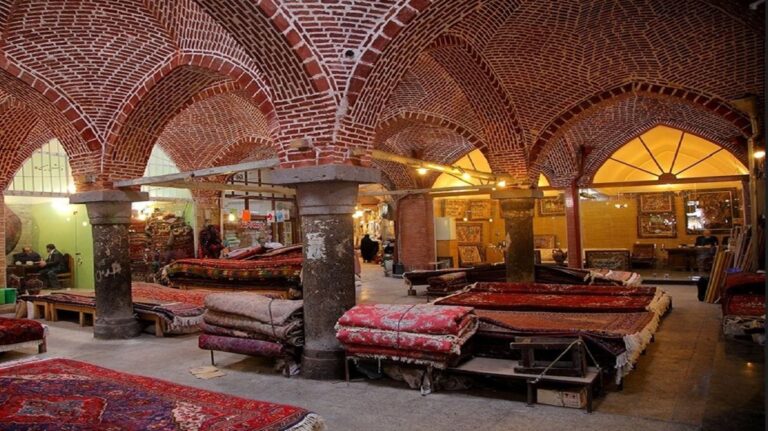
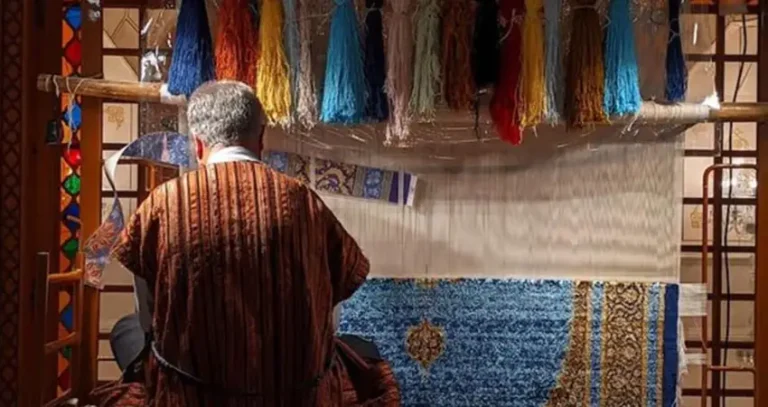
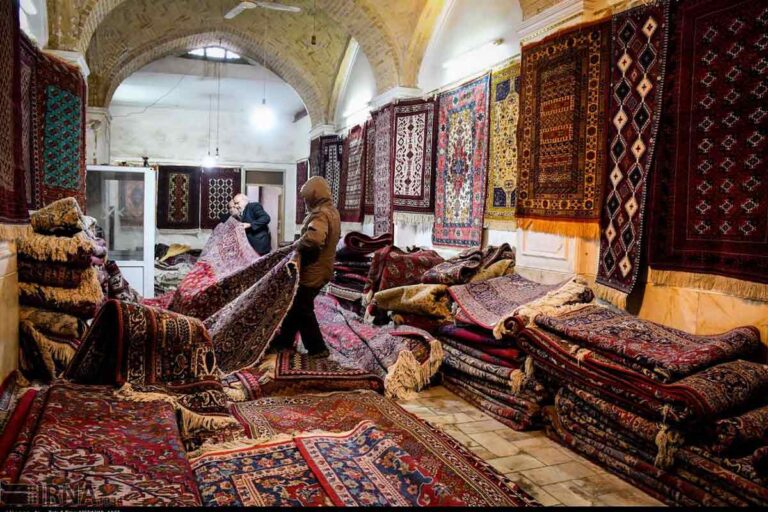
We bring you not just a carpet, but a masterpiece with a story — directly from the hands of Iranian artists to your home.
By working directly with artisans, we help preserve centuries-old traditions while offering our customers a chance to own a unique piece of original cultural heritage.